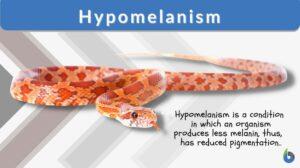
Hypomelanism
n., [ˈhaɪ.poʊ ˈmɛl əˌnɪz əm]
Definition: A condition in which an organism has relatively less melanin and hence, less pigmentation
Table of Contents
All the body cells of living organisms bear some color due to one or the other pigment molecule or complex. The pigment can vary from melanin in humans to xanthophore in amphibians to chlorophyll in plants. A pigment molecule, by its character, gives color to the individual in which it is present.
On that line, we now know that melanin is one of the most important pigment molecules in the animal kingdom. The condition of a low level of melanin is called “hypomelanism”. A hypomelanistic state usually results from reduced pigmentation and not the absence of pigmentation. Let’s delve deeper and try to understand it in detail.
Hypomelanism Definition
Hypomelanism is a condition of melanin deficiency where the production/synthesis process of melanin in the body is below the optimum. This is characterized by reduced pigmentation when we compare it to that in the wild-type phenotype.
Hypomelanistic: It’s a character state or an individual who manifests hypomelanism.
Etymologically, hypomelanism stands for ‘hypo’- possessing lesser than the normal amount of something and ‘melanism’- the state of possessing melanin pigment in the skin or other body parts.
Contrary to hypomelanism, hypermelanism is a state of having excess melanin pigment than the body’s optimum levels.
Melanin pigment
Melanin is a group of wide-ranging natural pigments that are found in almost all organisms. The process of synthesis of melanin is commonly called “melanogenesis”. This process is a multi-step chain reaction in which tyrosine amino acid is first oxidized and then followed up by its polymerization. There are specially characterized cells called “melanocytes” in which the body dedicatedly produces melanin pigment molecules.

Roles of melanin:
- Protection against UV rays
- Hair and skin pigmentation
- Protection of skin, eyes
- Aids survival of organisms in various environments
- Aids different types of interactions (pathogenesis, predation, etc)
- Thermoregulation
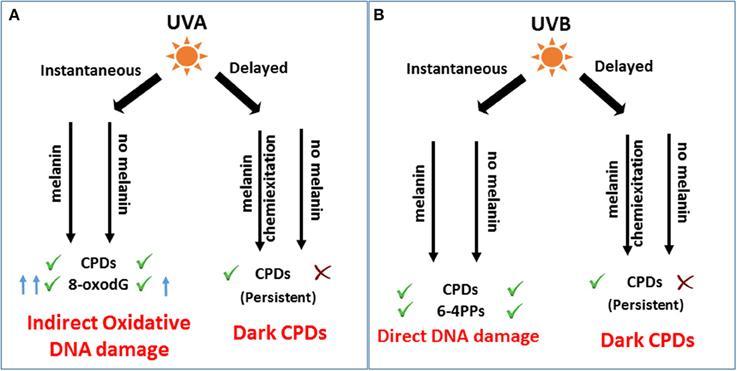
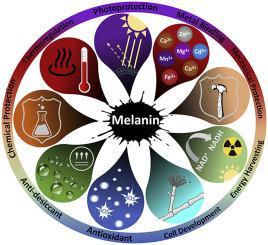
Types of melanin
There are basically 5 basic types of melanin pigment molecules namely,
- Eumelanin (the most common type)- divided into 2 subtypes
- Brown eumelanin
- Black eumelanin
- Pheomelanin (mainly responsible for red hair)
- Neuromelanin (mainly found in the brain)
- Allomelanin (a nitrogen-free form of melanin commonly found in fungi)
- Pyomelanin (melanin produced by several bacterial and fungal species)
Hypomelanism is a condition in which there is less pigmentation (melanin) than the wild type. The organism manifesting hypomelanism is described as hypomelanistic. The term is commonly heard in describing corn snakes and rat snakes. The combining word hypo- means “under”. This means that the melanin production is less, not necessarily absent. The term is used in contrast to hypermelanism, which is the accentuated form of melanin production. Etymology: Greek “hypo”-, meaning “under”.
Hypomelanism Examples
- Corn snakes (Pantherophis guttatus) are a North American species. They belong to the broader group of rat snakes. They are found throughout the central United States and some parts of the southern and eastern U.S. Corn snake breeders very often use the science of ‘hypomelanism’ for selectively breeding corn snakes for characteristic features of values. Such snakes are called hypomelanistic corn snakes and are of particularly high value in animal trade markets. Knowing this science helps them to breed and develop corn snakes of any chosen and selected color morph. Such snakes began manifesting the characters post-breeding in their filial generations.
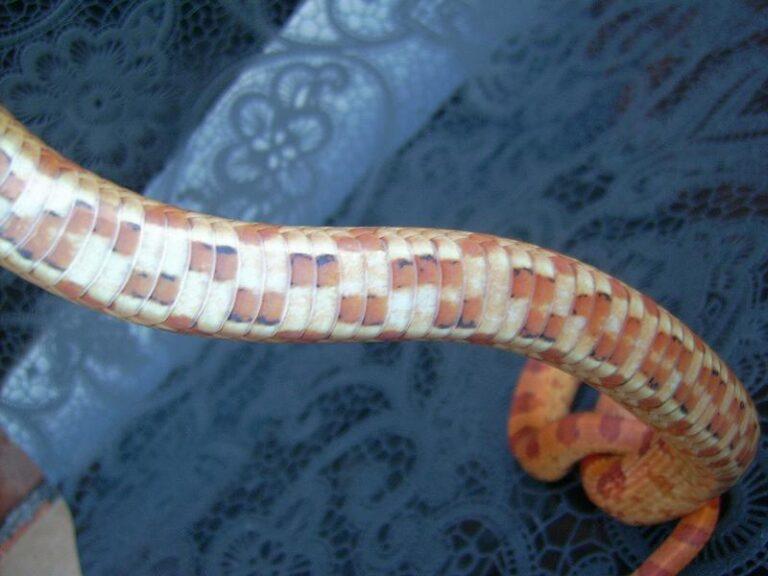
- Ghost corn snakes are a breed that displays both hypomelanism and type A anerythristic, and with distinctive features such as a pale gray background with darker-edges, medium gray-lavender saddles.
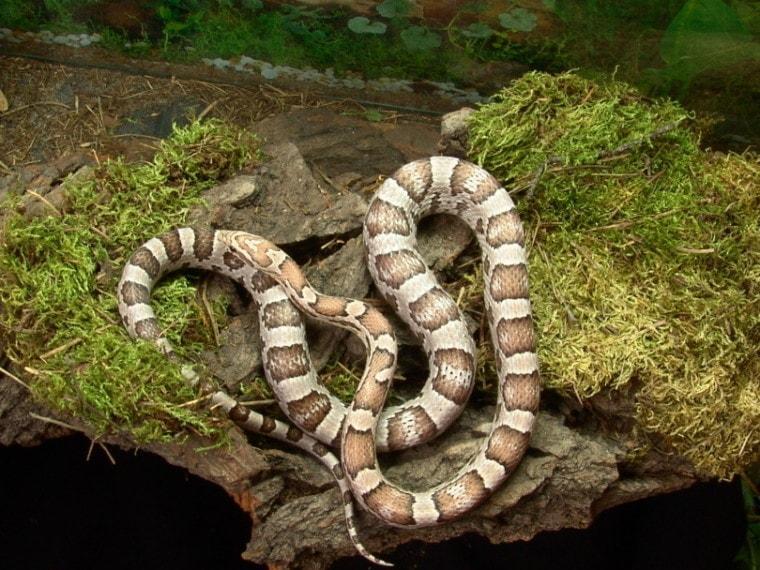
- As for the hypomelanistic rat snakes, the so-called brindle variant is one that has reduced pigmentation resulting in a light tannish pink color with reddish blotches.
- Hypo lavender corn snake: This is a captive-bred snake morph. Since they are lavenders in color (light pink), they are named after their phenotypic character.
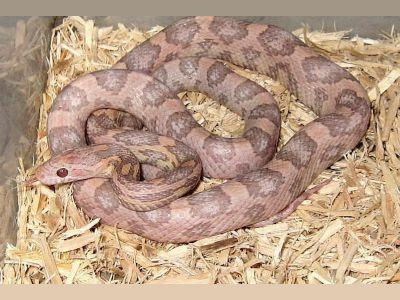
- Hypo motley corn snake: A motley corn snake is a type of pattern morph. Often confused with color morphs, this is a characteristic pattern morph. The snake’s scales don’t change their colors. This motley pattern was the earliest discovered and a very complex recessive pattern morph.
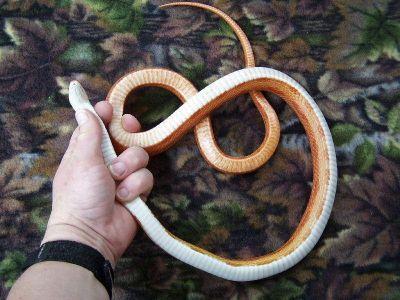
- There are some examples of wild Hypomelanistic snakes. One recently discovered one is “wild shovel-nosed snake”. Scientifically it’s called Chionactis occipitalis. They face many ecological challenges like:
- Higher chances of damage due to solar radiations
- Increases risk of being hunted down by predators
- Visual impairment
They usually limit these challenges by restricting any movements and activity during the day (remain buried in sand) and actively engage in biological activity only at night time.
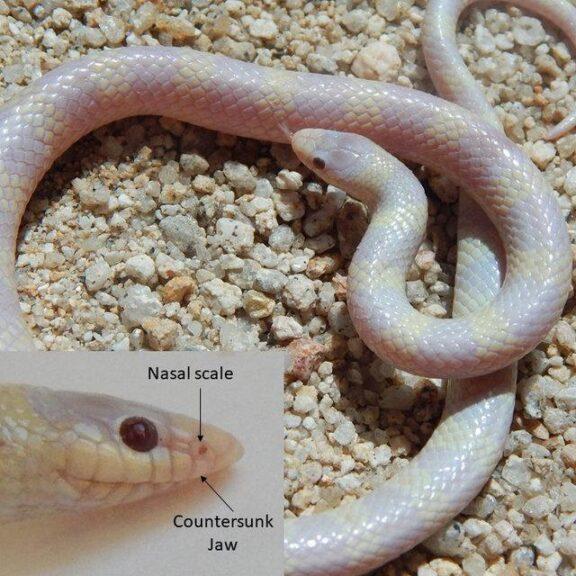
Answer the quiz below to check what you have learned so far about hypomelanism.
References
- Maranduca MA, Branisteanu D, Serban DN, Branisteanu DC, Stoleriu G, Manolache N, Serban IL. Synthesis and physiological implications of melanic pigments. Oncol Lett. 2019 May;17(5):4183-4187.
- D’Alba L, Shawkey MD. Melanosomes: Biogenesis, Properties, and Evolution of an Ancient Organelle. Physiol Rev. 2019 Jan 01;99(1):1-19.
- Cordero, R. J., & Casadevall, A. (2017). Functions of fungal melanin beyond virulence. Fungal biology reviews, 31(2), 99–112. https://doi.org/10.1016/j.fbr.2016.12.003
- Premi, S., Wallisch, S., Mano, C. M., Weiner, A. B., Bacchiocchi, A., Wakamatsu, K., Bechara, E. J., Halaban, R., Douki, T., & Brash, D. E. (2015). Photochemistry. Chemiexcitation of melanin derivatives induces DNA photoproducts long after UV exposure. Science (New York, N.Y.), 347(6224), 842–847. https://doi.org/10.1126/science.1256022
- Gajula, R. P., & Gaddameedhi, S. (2015). Commentary: Chemiexcitation of melanin derivatives induces DNA photoproducts long after UV exposure. Frontiers in physiology, 6, 276. https://doi.org/10.3389/fphys.2015.00276
- Mira-Mendes, C. V., Rios, C. H. V., Martins, R. A., Medeiros, T., Solé, M., Argôlo, A. J. S. (2017): A case of albinism in Amerotyphlops brongersmianus (Vanzolini, 1976) (Serpentes: Typhlopidae) from southern Bahia, northeastern Brazil. Herpetology Notes 10: 131-132.
- Malachi D. Whitford, Grace A. Freymiller, Jessica M. Ryan, Drew P.J. Steele, Corrina N. Tapia5 and Rulon W. Clark. (2017). Chionactis occipitalis: hypomelanism. Herpetology Notes, volume 10: 411-412.
©BiologyOnline.com. Content provided and moderated by Biology Online Editors.

